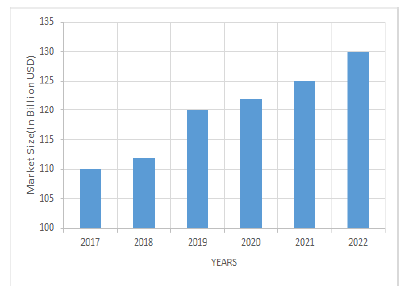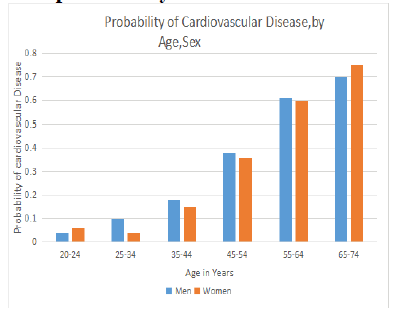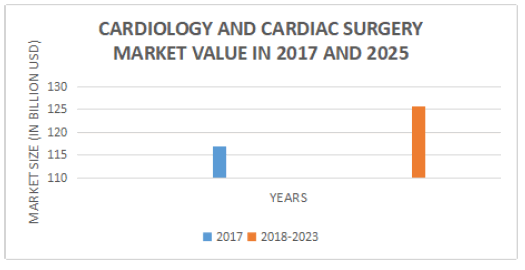Editorial - Current Trends in Cardiology (2019) Volume 3, Issue 1
Market Analysis for Medical Summit and Expo on Cardiology, Heart Disease and Heart Failure
Mark CannellChair, Cardiac Cell Biology, University of Bristol, United Kingdom, E-mail: mark.cannell@bristol.ac.uk
The cardiovascular disease market, which includes various numbers of disorders like hypertension, coronary artery disorders, cardiac arrest, dyslipidaemia and thrombotic events, is set to grow from $129.2 billion in 2015 to $146.4 billion by 2022, at a very modest compound annual growth rate of 1.8%, according to business intelligence provider GBI Research.
The global cardiology market size was valued at USD 116.9 billion in 2017 and is expected to grow at a CAGR of 7.4% over the determined forecast period 2017-2022. Increase in the generality of Congenital Heart Defects and the presence of technologically advanced cardiology and cardiovascular valves, grafts, and patches are among fundamental factors expected to drive development over the forecast period.

According to the WHO report in May 2018, the mortality rate of the population in Asia and the Middle East region is due to the increase in cardiology diseases. With new drugs and devices entering the market, there is rapid growth in the global cardiology therapeutics market. Diabetes is one of the major factors leading to the current cardiovascular disease epidemic according to our cardiology market research expert. The growing number of chronic diseases such as diabetes, heart attack is the major section leading to the growth of the cardiology failure market. The cardiology market size is expected to grow in the coming years due to the potential breakthrough of newly authorized drugs entering the market.
‘Novartis’ heart-failure drug Entresto was introduced to the market in July 2015, and GBI Research expects its revenues to increase dramatically during the forecast period. Entresto is a combination drug, which has shown efficacy in clinical trials. Coupled with a high cost, which amounts to over $4 500 annually per patient, the drug contributes to a very high revenue forecast of $5.7 billion by 2022.
The sheer number of expirations and approvals means the structure of the market will shift significantly. According to the registry of the International Society for Heart and Lung
Transplantation, approximately 500-600 pediatric heart transplantation procedures are performed globally every year, which represents around 12% of the total number of heart transplants performed among all the patients. And in 2014, a total number of pediatric heart transplants execute globally was 586. In children, the most often caused by heart failure is occurred owing to a congenital heart defect or cardiomyopathy. Thus this increasing rate of heart failure has increased the fatality rate in children with this disorder.
The global market for a heart transplant is expected to grow at a CAGR (Compound Annual Growth Rate) of 11.2% during the forecast period of 2017-2023. The global Interventional Cardiology market is anticipated to grow at a steady rate and will post a CAGR of more than 7% during the forecast period. The growing demand for minimally invasive (MI) procedures will drive the growth prospects for the global Interventional Cardiology market in the forthcoming years.
The probability of Cardiovascular Diseases:

Scope and Importance
Cardiology is an ever-developing branch in the field of medicine. People in this era both young and old are vulnerable to heart disorders which are mainly due to their lifestyle and improper hygiene. In order to tackle these diseases and its causes, the study of Cardiology has gained high importance in the course of time. Interventional cardiology is a part of cardiology which uses minimally invasive methods to correct disorders with the use of a catheter which helps doctors and patients to have the surgery done with less blood loss and minimal risk.
Some of the Scientific advancements are also expected to drive the cardiac surgery devices market in the fields of material sciences, interventional cardiology, and cryopreservation. The utility of expanded Polytetrafluoroethylene for cardiovascular patches, the introduction of transcatheter heart valves, and the process of minimally invasive technologies, such as transcatheter aortic valve implantation or transcatheter aortic valve replacement, are among few elements expected to raise the growth over the predicted period. In addition, modification in cryopreservation methods by key performers such as CryoLife is among major technological advancements in cardiac Surgery therapies that are expected to positively influence the market.
